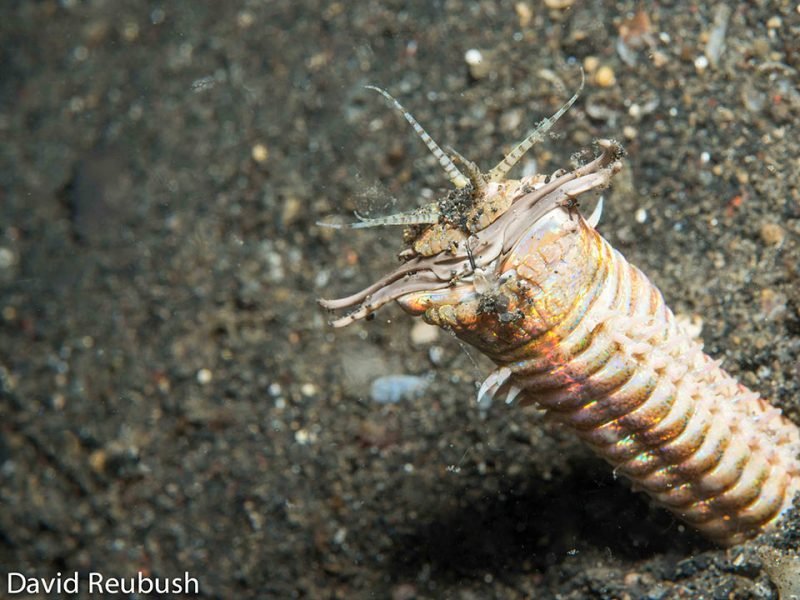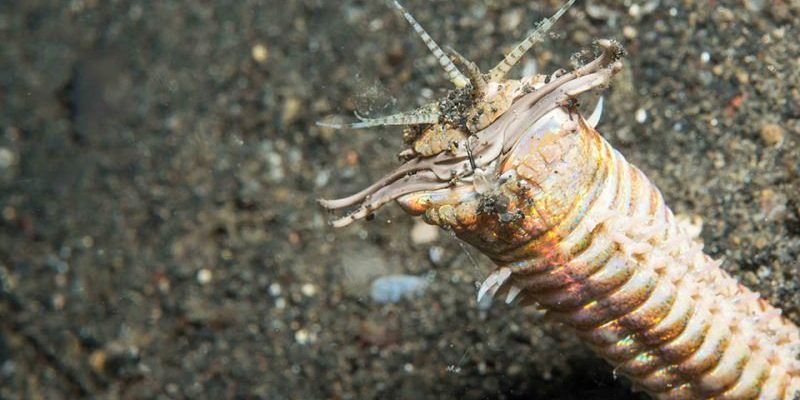
Bobbit worms, scientifically known as *Eunice aphroditois*, are a type of polychaete worm. They can grow up to 10 feet long (yes, they can be that big!), and they primarily dwell in tropical and subtropical waters. Their striking colors, often bright greens and reds, help them blend into their environment. But where can you actually see these captivating creatures in the wild? Let’s dive into the best locations for observing Bobbit worms and why they’re worth the trip.
Understanding the Habitat of Bobbit Worms
Bobbit worms are generally found in sandy or muddy substrates on the ocean floor. They love to burrow into the sand or mud, where they create elaborate homes that help them hide from predators. Think of it like having your own cozy cave, but underwater! This habitat not only protects them but also makes their hunting strategy more effective. They wait patiently for prey to swim by, using their long, extendable jaws to quickly snatch up dinner.
Their preferred habitats include coral reefs and seagrass beds, as these areas provide not only food sources but also the necessary structure for burrowing. When exploring these environments, you might stumble across other fascinating marine creatures, making the experience even richer. It’s a great way to get a feel for the vibrant underwater ecosystem they inhabit!
Top Locations to Observe Bobbit Worms
If you’re eager to spot a Bobbit worm, there are several locations around the world that are known for their populations. Here are some of the top spots:
- Great Barrier Reef, Australia: This iconic reef is teeming with diverse marine life, including Bobbit worms. Scuba diving or snorkeling in this area might just reward you with a sighting.
- Red Sea, Egypt: The warm waters and rich biodiversity of the Red Sea make it an excellent place for viewing various marine species, Bobbit worms included.
- Coral Triangle, Southeast Asia: Encompassing areas in Indonesia, Malaysia, and the Philippines, this region is rich in marine life. If you’re diving here, keep an eye out for these mesmerizing worms.
- Florida Keys, USA: The protected waters in this area are home to a variety of sea creatures, and Bobbit worms are among them. Exploring the reefs here can lead to some exciting discoveries.
Honestly, each of these locations has its own charm, making them exciting destinations for marine exploration. Whether you’re a seasoned diver or a curious snorkeler, you’ll likely find something amazing while hunting for these worms.
The Behavior and Hunting Techniques of Bobbit Worms
You might be wondering what makes Bobbit worms so fascinating beyond their looks. Their behavior is just as captivating. Bobbit worms are ambush predators. They hide in their burrows with only their jaws exposed, patiently waiting for fish or other marine organisms to swim by. When prey comes too close, these worms spring into action, striking with incredible speed.
Let me explain: their jaws are armed with sharp teeth, allowing them to grab and hold onto their meal. This hunting method is both effective and efficient, showcasing their role in the marine food chain. Bobbit worms help control populations of smaller fish and invertebrates, illustrating how their presence is vital to maintaining balance in their ecosystem.
Best Times for Observing Bobbit Worms
If you’re planning a trip to spot Bobbit worms, timing is essential. These worms are mostly nocturnal, meaning they tend to be more active during the night. If you’re venturing into the ocean to observe them, you’ll have the best luck diving or snorkeling after the sun goes down.
Additionally, consider the tides. Bobbit worms thrive in areas with a stable substrate, so low tide can expose more of their habitat, making them easier to spot. Checking tide charts before your trip can help you plan effectively. You might be surprised at how much more life you can see during the quieter hours of the night!
Safety and Conservation Considerations
While it might be exciting to observe Bobbit worms in their natural habitat, it’s essential to approach these experiences with respect. Many areas where these worms are found also host delicate ecosystems that need protection. When you go diving or snorkeling, make sure to follow environmentally friendly practices:
- Avoid touching: It’s best to keep your hands to yourself to avoid damaging coral reefs and disturbing marine life.
- Follow local guidelines: Always adhere to the rules of the area you’re exploring, including conservation measures aimed at protecting marine habitats.
- Promote conservation: Consider donating to or volunteering with organizations that work towards preserving marine life and their habitats.
Maintaining the health of these ecosystems ensures that future generations can enjoy the same fascinating sights that you do today.
In summary, if you’re excited about the prospect of seeing Bobbit worms in the wild, planning your adventure is key. With locations like the Great Barrier Reef, the Red Sea, and the Coral Triangle on your list, you’ll find plenty of opportunities to delve into the underwater world. Remember to be patient and respectful while observing these incredible creatures, as their unique behaviors and vibrant habitats contribute to the rich tapestry of marine life.
By immersing yourself in these enchanting environments, not only can you witness the beauty of Bobbit worms, but you can also score some unforgettable memories of your underwater explorations. So gear up, get ready, and let the adventure begin!

